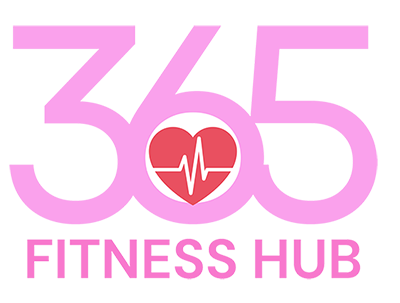Finding Your Right Fitness Routine: What Works, What Doesn’t, and How to Make It Stick
In a world brimming with fitness trends, workout plans, and social media fitness influencers, finding the right fitness routine can feel overwhelming. The search for a routine that fits your body, lifestyle, and goals is a deeply personal journey, one that involves trial and error, as well as self-reflection. However, by understanding what works and what doesn’t, you can craft a fitness routine that not only delivers results but also keeps you motivated and committed in the long term.
Why It’s Important to Find the Right Routine
A well-tailored fitness routine can improve both physical and mental health. Regular exercise helps boost energy, reduce stress, improve sleep, and enhance mood. Additionally, a proper fitness plan supports weight management, builds strength, and reduces the risk of chronic diseases like heart disease and diabetes. However, embarking on the wrong fitness routine or one that doesn’t align with your needs can lead to frustration, burnout, or even injury. That’s why it’s so important to understand what works for you and what doesn’t.
What Works: Creating a Routine that Fits Your Goals and Lifestyle
- Define Your Fitness Goals
The first step in creating the right fitness routine is to clearly define your goals. Are you looking to lose weight? Gain muscle? Improve endurance? Boost flexibility? The answer to this question will guide your workout choices. For example:
- Weight Loss: If weight loss is your goal, a combination of cardio and strength training is effective. Cardio helps burn calories, while strength training builds muscle, which in turn boosts metabolism.
- Muscle Gain: If you aim to build muscle, your focus should be on strength training with heavier weights and fewer repetitions. Compound exercises like squats, deadlifts, and bench presses are great for overall muscle growth.
- Endurance: For improving cardiovascular endurance, focus on aerobic exercises such as running, cycling, swimming, or HIIT (High-Intensity Interval Training).
- Flexibility and Mobility: Incorporating yoga or Pilates can improve flexibility, reduce the risk of injury, and promote overall body mobility.
- Start with What You Enjoy
One of the most important factors in sticking with a fitness routine is enjoying it. If you dread every workout, you’re less likely to keep at it. Find an activity that excites you and feels rewarding. Whether it’s hiking, swimming, dancing, or weightlifting, making the workout fun increases the chances of consistency. Plus, when you enjoy what you’re doing, you’ll likely push yourself harder and see better results. - Mix Things Up
While consistency is key, variety also plays an important role in achieving long-term fitness success. Sticking to the same routine every day can lead to boredom and plateaus. Incorporate different types of exercises to keep your routine exciting and challenging. Alternating between strength training, cardio, and flexibility exercises not only keeps things interesting but also ensures you’re working different muscle groups and preventing overuse injuries. - Start Slowly and Progress Gradually
If you’re new to fitness or coming back after a break, it’s important to start slow. Trying to do too much too soon can result in injury or burnout. Begin with basic exercises, focusing on form, and gradually increase intensity and volume as your strength and stamina improve. Aim for a manageable schedule—whether it’s 2-3 workouts a week—and increase frequency and intensity over time as your body adapts. - Incorporate Rest and Recovery
A good fitness routine isn’t just about working hard; it’s about recovering well too. Adequate rest allows your muscles to rebuild, recover, and grow. Overtraining can lead to fatigue, injury, and decreased performance. Make sure to include at least one or two rest days per week, especially after intense workouts. Active recovery activities like walking, yoga, or stretching can also help keep the body moving without overtaxing it. - Stay Accountable
Accountability is a powerful motivator. Whether you’re working out with a friend, joining a fitness class, or using a workout app, having someone or something to keep you on track can make a huge difference. Setting specific goals, tracking your progress, and celebrating small wins can also help maintain motivation. What Doesn’t Work: Common Mistakes to Avoid - Focusing on Only One Type of Exercise
While focusing on one type of exercise might seem like a good idea, it can actually limit your progress. For instance, running every day without incorporating strength training could lead to muscle imbalances, a higher risk of injury, and slower progress. Similarly, strength training without cardio can hinder heart health and endurance. A balanced approach is key to a well-rounded fitness routine. - Neglecting Warm-ups and Cool-downs
Jumping straight into intense exercise without a proper warm-up or ending a workout without cooling down is a common mistake. This can increase the risk of injury and impede recovery. A warm-up prepares your muscles and joints for activity, while cooling down helps reduce muscle soreness and promotes flexibility. Spend at least 5-10 minutes on both before and after your workout. - Overtraining
It’s easy to get caught up in the idea that more is better, but overtraining can lead to burnout and injury. Too many workouts without enough rest can lead to exhaustion, decreased performance, and muscle strain. Listen to your body, and if you’re feeling fatigued, take a break. Your body needs time to rest and repair itself to improve. - Setting Unrealistic Expectations
Setting overly ambitious goals—like expecting to lose 20 pounds in a month or lifting a heavy weight after a few weeks of training—can lead to disappointment and frustration. Progress takes time, and fitness is a journey. Focus on setting SMART goals (Specific, Measurable, Achievable, Relevant, and Time-bound) and be patient with yourself. Remember, consistency over time leads to real, lasting results. - Not Paying Attention to Nutrition
Exercise alone is not enough to achieve your fitness goals. Nutrition plays a crucial role in supporting your body’s energy needs, recovery, and muscle-building processes. Without proper nutrition, you may not see the results you’re aiming for. Make sure to fuel your body with a balanced diet rich in whole foods, including lean proteins, healthy fats, fruits, vegetables, and complex carbohydrates. Tips for Making Your Fitness Routine Stick
- Set Realistic Goals: Set small, achievable goals that you can gradually build upon. Celebrate every milestone to stay motivated.
- Track Your Progress: Keep a workout journal or use an app to track your routines, progress, and improvements.
- Find Support: Whether it’s a workout buddy, a fitness group, or an online community, having support makes the process more enjoyable and sustainable.
- Be Flexible: Life happens, and there may be days when you miss a workout or need to adjust your schedule. Don’t be discouraged—just get back on track.
- Listen to Your Body: Pay attention to your body’s signals. If you’re feeling tired or experiencing pain, take the time to rest and recover. Conclusion
Finding the right fitness routine is about discovering what works for your body, goals, and lifestyle. While some routines may not yield immediate results, the key is consistency, gradual progression, and enjoyment. Focus on creating a balanced routine, stay flexible, and remember that fitness is not just about physical strength but also about cultivating mental resilience and personal growth. The right routine will not only transform your body but will also empower you to live a healthier, happier life. So, experiment, stay committed, and enjoy the journey toward a fitter you.

